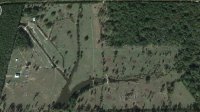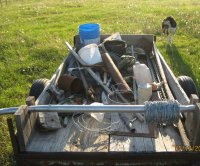farmerjan
Herd Master
- Joined
- Aug 16, 2016
- Messages
- 12,713
- Reaction score
- 52,413
- Points
- 768
- Location
- Shenandoah Valley Virginia
GOD BLESS YOUR POOR CAR!!!!!!
Good question. I previously stated " and it all/each stretches a set amt per foot for any given type of wire.@greybeard
Regarding: "When we stretch wire, we do exactly that--we are pulling it and making it longer than it is when it came off the roll--hence the 'stretching' term."
When I buy a 330' roll of fencing is that the length on the roll or the length AFTER stretching it? I got out my long tape to make sticking the t-posts in every 10' easier rather than having to measure, pound, measure, pound... . Never had a need to use anywhere near the entire tape before. I noticed it ran out at 330' which just happens (without planning on my part) to be the exact length of the west side of my project. I'm guessing the fact that it is the same as a roll of fence is not a coincidence.



